This particular monument is dedicated to Victor Emmanuel II (14 March 1820 – 9 January 1878) first King of unified Italy in 1861. On either side of the monument is a woman and her winged lion - one is posed as if in battle with a lion gnawing at his chains, on this side is a women dressed in royal garb and a roaring lion with his claws upon two closed books. On top of this monument is an equestrian statue of Emanuele II.
This statue represents the history of Venice directly following its defeat by Napoleon. It was built to give honor to King Victor Emmanuel II, the first king of a united Italy. It commends his efforts during the joining of Italy, commonly referred to as the Risorgimento. This statue portrays these events primarily through the two representations of Venice.
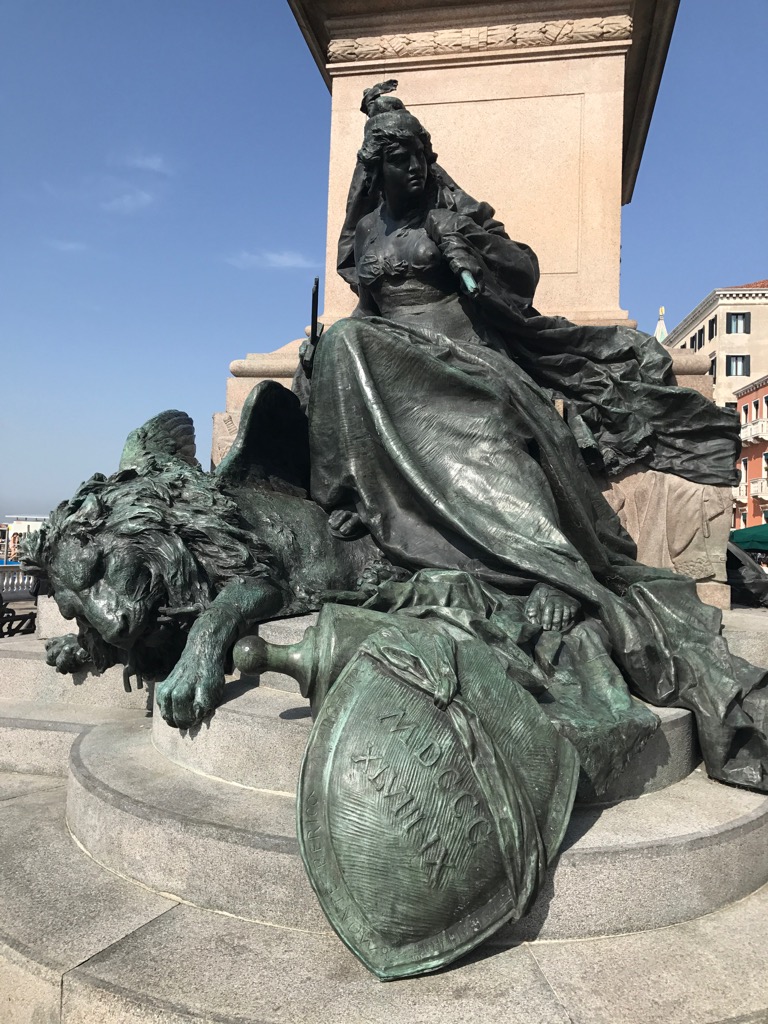
On one side of the statue, Venice is depicted as a fallen yet determined woman. She is sitting next to the lion of St. Mark who is covered in the chains of Austrian rule. This Venice, according to the dates shown on the shield, is the defeated and oppressed Venice. The years are 1848-49 which is when Austria took control of Venice and depleted the republic. The aspect of war and the fight for freedom is shown by the image commonly associated with the French Revolution. The Venice on this statue bares one breast and holds a flag close to her body, just as the woman in many French Revolutionary War pictures does. She also carries a broken sword, symbolizing the defeat during her attempt to fight for freedom.
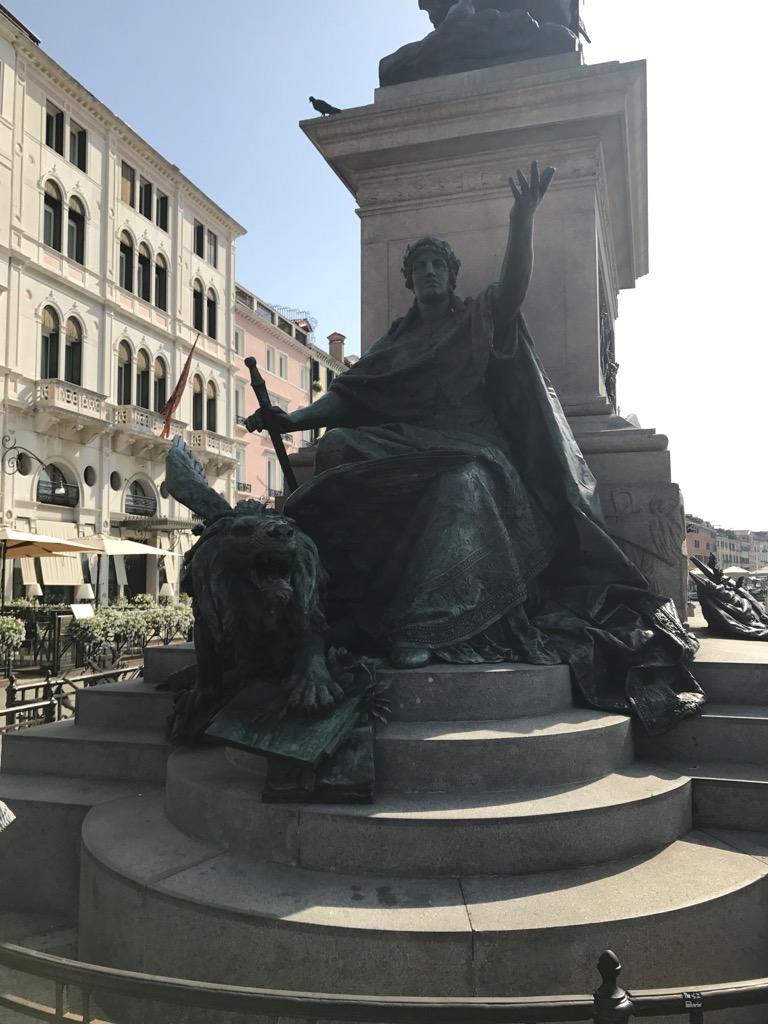
On the other side of the statue, Venice is free and united with Italy. The lion of St. Mark has broken through the chains and is shown roaring. This is a symbol of the pride and strength of Venice as a city. The woman is wearing a dress covered in an elaborate pattern and fancy shoes showing the wealth and beauty of the city after it won independence from Austria during the Prussia-Austria War.
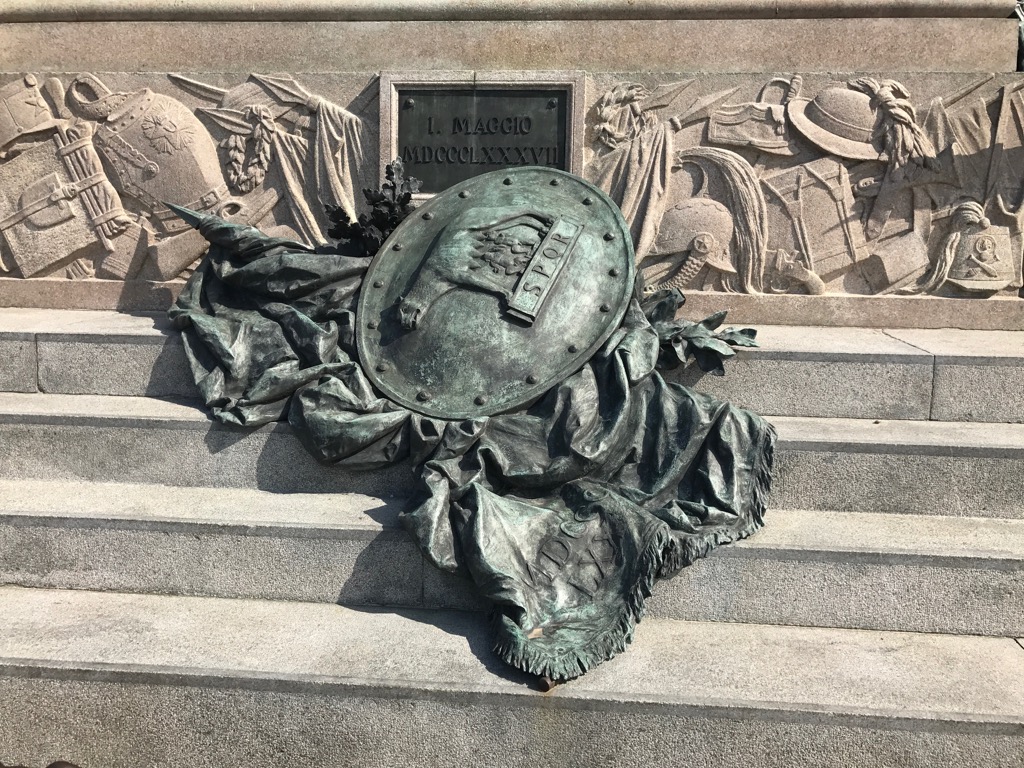
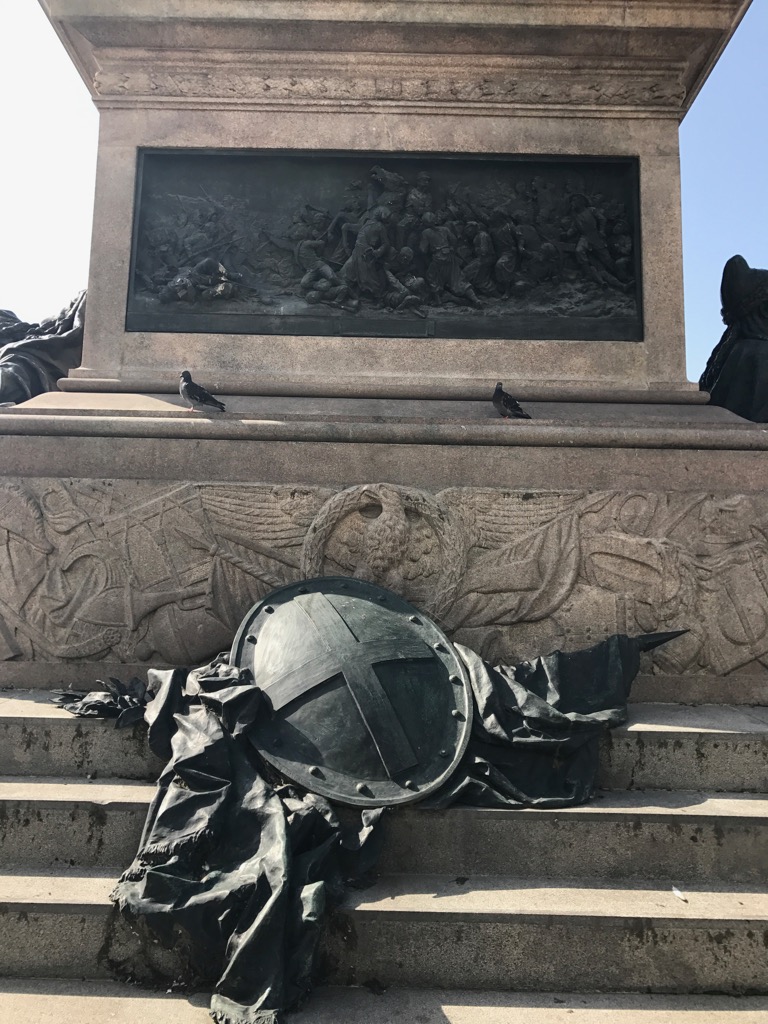
On either side of the monument, there are also shields. One is of the city of Savoy which was given to Napoleon in return for his aid during the Prussia-Austria War and the other is the city of Rome. Rome became the national capital after all of Italy was united. This statue depicts the events of Venice’s uniting with Italy and in a way, having Rome as part of the statue links Venice to the capital. It ties it to Rome and helps to establish it as a powerhouse.
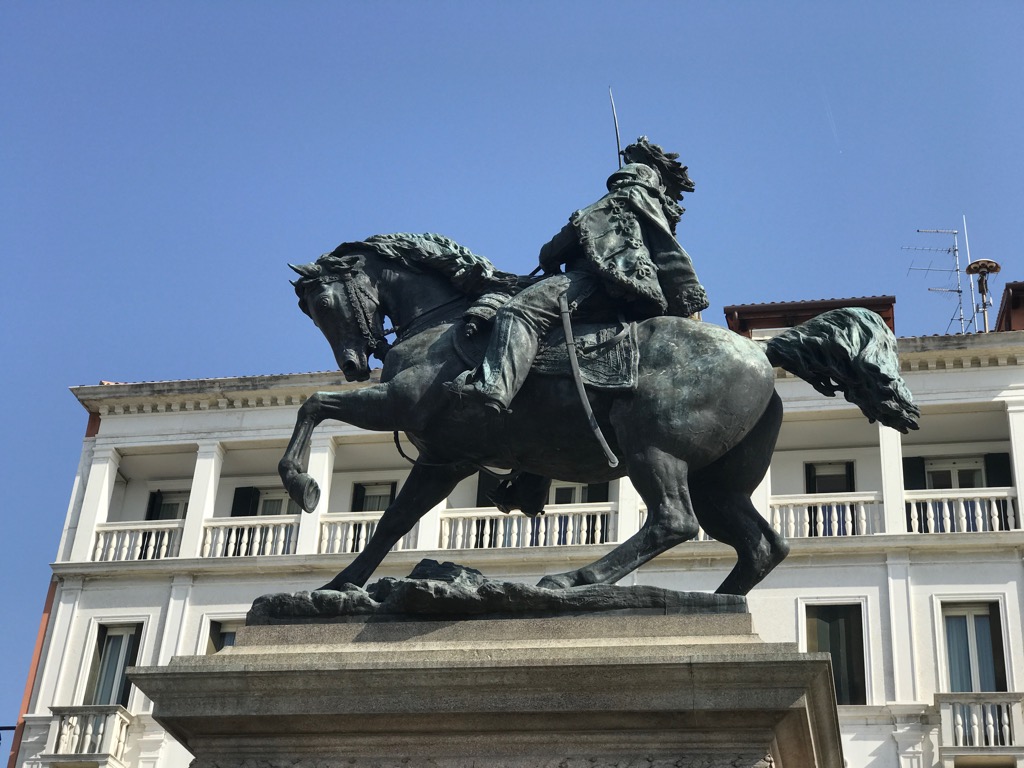
This sculpture is one of only two equestrian statues in Venice, the other being in San Giorgio e Paulo. The equestrian statue was common in ancient times and did not reappear until the fifteenth century during the Italian Renaissance. The first of these appears in Padua and was created by Donatello. The craftsmanship of these statues was exquisite and showed a leap towards realism and proportion that was rather nonexistent during the Gothic time. Although this statue came later than the Renaissance, it is still symbolic of the advances made in Italy during that time. It shows technique, balance, and realistic qualities of the animal. In addition to the horse, the representations of the women are also significant. They play on the myth of Venice. The city is represented as a beautiful woman. She is determined, strong, and she conquers in the end. It shows her liberation from Austria and all of these characteristics given to her can be given to the true city as well—this idea of liberation, sexual freedom, and strength as an empire.